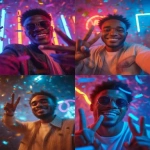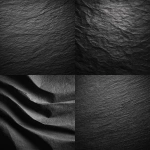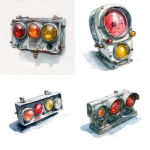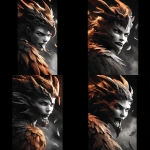Explore the Best AI Image Gallery

Pixels on Skin: Exploring the Impact of AI Image Generation in Design
The creative landscape is undergoing a seismic shift with the emergence of AI image generation. These sophisticated algorithms, capable of producing stunning visuals from simple text prompts, are disrupting traditional design workflows and pushing the boundaries of artistic expression. This blog post delves into the fascinating world of AI-generated imagery, exploring its impact on the design industry, potential applications, ethical considerations, and future trends.
A New Design Frontier
AI image generators are empowering designers with unprecedented creative tools. By automating repetitive tasks like generating initial sketches or variations, designers can focus on higher-level conceptualization and refinement. Imagine a world where a designer inputs their vision for a logo and the AI generates multiple options, each unique and tailored to their specifications. This accelerates the design process, allowing for rapid iteration and exploration of diverse concepts.
Applications Across Industries
- Marketing and Advertising: AI-generated visuals can create captivating marketing materials, personalized advertisements, and eye-catching social media content.
- E-commerce: Product mockups, lifestyle imagery, and unique visual merchandising can be generated instantly, enhancing the online shopping experience.
- Publishing and Media: From book covers to illustrations for articles, AI can assist in creating visually compelling content across various platforms.
- Architecture and Interior Design: Conceptual visualizations, 3D renderings, and realistic walkthroughs can be generated rapidly, aiding in design development and client presentations.
Ethical Considerations
The rise of AI image generation also raises important ethical concerns:
- Copyright and Ownership: Questions arise regarding the ownership of AI-generated images. Who holds the copyright—the user who provides the prompt, the developer of the AI algorithm, or the AI itself?
- Bias and Representation: AI models are trained on massive datasets, which may contain inherent biases that reflect societal prejudices. This can lead to the generation of images that perpetuate harmful stereotypes.
- Job Displacement: While AI can augment creative workflows, concerns exist about potential job losses for designers and artists whose tasks are automated.
The Future of AI-Generated Design
The future of design is inextricably linked to the evolution of AI image generation. We can expect:
- More sophisticated algorithms: AI models will continue to improve in their ability to generate realistic, nuanced, and creative visuals.
- Personalized design experiences: AI will enable truly personalized designs tailored to individual preferences and needs.
- Enhanced collaboration between humans and AI: Designers will leverage AI as a powerful tool to augment their creativity and push the boundaries of what is possible.
As AI image generation technology matures, it presents both exciting opportunities and significant challenges. By addressing ethical concerns, fostering responsible development, and embracing collaboration, we can harness the power of AI to unlock new realms of creative expression and innovation in the design industry.









](https://images.ai-img.art/thumbnails/150/1accb5453f2335686b162f0a879c7ce73a18516a33868f214a16bdaf95beeb5a.webp)




](https://images.ai-img.art/thumbnails/150/8c320ce9aefbbb5b9ec5fd4e1d0fba7388f0fff5b6c2e2f14077cad3008f291d.webp)

](https://images.ai-img.art/thumbnails/150/3c5dc62bba83cc9919c20ebfec8430d31e821cef586a2753dd85ef26d77d480a.webp)
](https://images.ai-img.art/thumbnails/150/3e8c063b4357fc743a3c6e49a3145ee31b2dcecc018c38d2db8f97bf3e3fda3f.webp)




](https://images.ai-img.art/thumbnails/150/1d7b3a908141474d50d90721c394db29c0cb5404d685ae70ea60430c18e905b7.webp)
